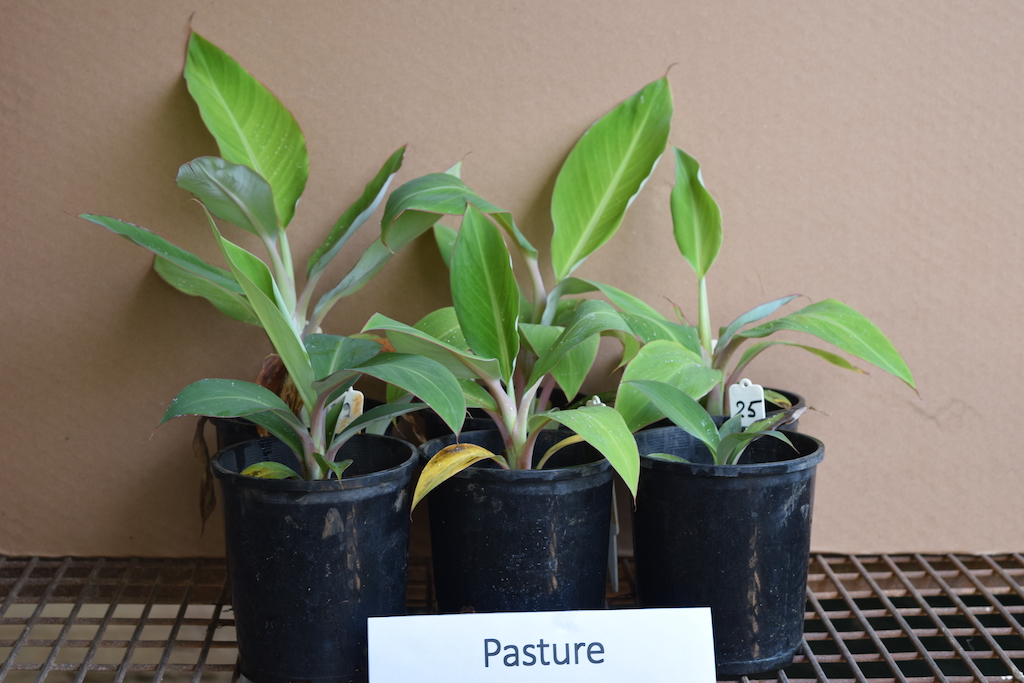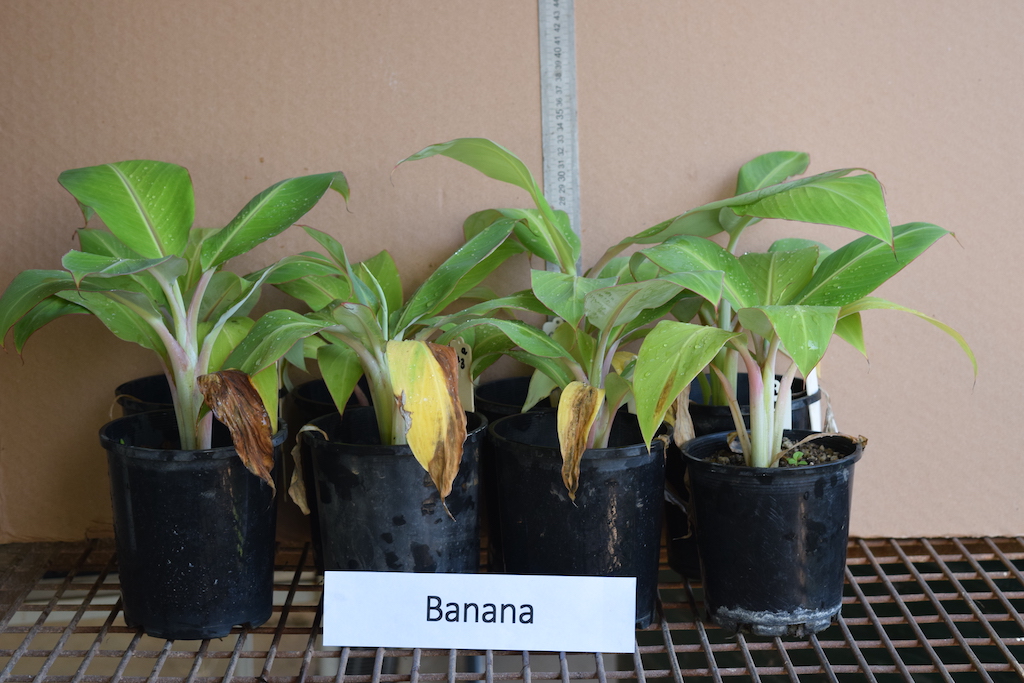By Tony Pattison, Queensland Department of Agriculture and Fisheries
Why is it that Panama disease shows up in some plants, blocks and farms and not others? The answer to this question may be in the soil, and what lives in it. What is living in soils from different land uses and how this effects suppression of Panama disease is part of a study conducted in the north Queensland wet tropics. The study compared soils from rainforests, pastures, sugarcane and bananas, with scrutiny of their microbial characteristics, including bacteria, fungi, nematodes, arthropods and insects. The ability to suppress Race 1 Panama disease, when a susceptible Ducasse plant is grown in inoculated soil was also tested.
Bananas grown in soils collected from banana and sugarcane farms showed more pronounced external symptoms of Panama disease, like leaf yellowing, pseudostem splitting and leaf collapse, than in plants grown in soils collected from pasture or national parks.
However, the amount of internal disease symptoms measured showed a differentresult. The amount of disease infected corm tissue of bananas was highest in plants grown in the pasture soils, with on average 3-10% more infected corm material than plants grown in banana soils.
The differences in the expression of the disease symptoms could be explained by differences in the microbial communities in the soils. A complete analysis of the microbiology is continuing, but the initial results show some big differences. For example, the banana soils had one-third of the number of fungal feeding nematodes, compared with rainforest and pasture soils.
Soil fungi can compete with Fusarium, with some fungi developing methods to give them a competitive advantage, like the production of antibiotics. The soil microbial community acts as a reservoir of organisms, with the plant having some ability to select which organisms can move through the roots. If there is a large selection of fungi, they can hinder and slow Fusarium, helping the plant to defend itself.
The interaction between the plant and beneficial soil fungi may be why we see the differences in Panama disease between plants, blocks and farms.
Getting the full benefits from the soil biology for Australian banana growers to suppress Panama disease is the focus of a new 5-year Department of Agriculture and Fisheries and Queensland University collaborative project, with support from the Australian Centre for International Agricultural Research (ACIAR), and work to take place in Australia, the Philippines, Laos and Indonesia.

Dr Hazel Gaza holding Ducasse banana plants infested with Panama disease and showing typical leaf yellowing on the left and an apparently health plant on the right.

A pot experiment where Ducasse plants grown in soil from different land uses rainforest, pasture, sugarcane and bananas, show a range of Panama disease symptoms.

Differences in the expression of Panama disease symptoms of Ducasse banana plants grown in soils collected from pastures.

Differences in the expression of Panama disease symptoms of Ducasse banana plants grown in soils collected from banana.
